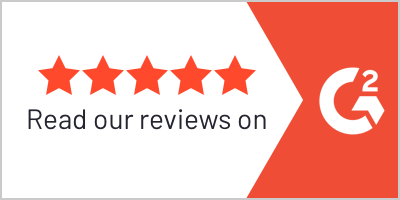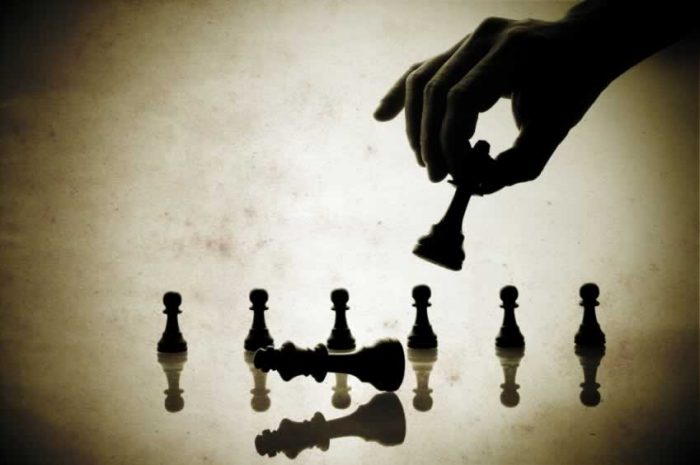Generally speaking, the workflow of a successful sales operation looks something like this:
- The Sales Development Representative (SDR) qualifies a lead and passes it to a salesperson.
- The salesperson contacts the lead and wins their business, then passes the new customer to the Customer Success Team.
- A Customer Success Representative (CSR) helps the customer with installation, support, maintenance, and increases the likelihood for long-term customer success.
It’s a smart framework that has been proven to work time and time again, but while many customer success teams achieve a satisfactory ROI, they don’t always maximize that ROI. And that’s what ROIs are there for, right? Fill that cup until it overflows. Turn that amp up to 11. Keep the dream alive!
To maximize your ROI, you have to upsell, cross-sell, and of course, resell.
Now, a good inside sales person is trained to do just that, but within this common sales operation framework, salespeople aren’t always in a good position to up, cross, or resell anything. That’s because when the planets are aligned and the time is right for more selling, the salesperson has already moved on to new leads. They’re probably not even in contact with the customer anymore.
But the customer success representative is. They still have a relationship with the customer. In fact, it’s not unusual for the CSR to have a stronger relationship with the customer than the sales person. They have front row seats to the customer’s ongoing needs, goals, and success in using the product or service. They’re perfectly positioned to cross-sell, upsell, and resell – to maximize that ROI.
Okay, before I go any further, let’s define customer success, and establish what a CSR actually does. Just so there’s not any confusion.
Customer success, which became popular in the SaaS world, is what happens after someone signs a deal. It’s a proactive approach in engaging clients to ensure a more accurate, efficient, and seamless onboarding process, reduce customer churn, and identify further selling opportunities. A CSR works with the customer to help get them set up with the product. They call in to see how everything is going. They field questions and concerns and make intelligent recommendations. In short, they’re there to ensure that each customer has a successful experience with the product, and achieves their desired outcome.
It’s also important to note that customer success is not the same thing as customer service. A customer service rep is who you call to moan about how hard it is to put the IKEA table together. A customer success rep is who you call to come over and help you build it. Of course, IKEA offers no such service, but you get the idea.
Customer success is also not the same as customer support, although the two departments bare some similarities. While customer success is more proactive, and dedicated to the overall success of the customer, customer support is more reactive, and dedicated to the day-to-day technical issues.
Now back to our point. After the salesperson signs the customer, they pass them to a CSR, who starts facilitating the onboarding process. At this point, the customer will often be more relaxed, as the selling part is ostensibly over, and the purchasing decision has been made. If the CSR is good at their job, they’ll use the opportunity to develop a rapport with the customer. This rapport can net a lot of valuable information. We’re talking everything from business goings-on to personal anecdotes, and over time, CSRs develop a better understanding of customer use cases than anyone else in their own organization.
In short, the CSR truly becomes the “go-to” person for all things customer-related. They can provide valuable information to marketing and engineering about product use cases. They can share success stories with the SDR and inside sales team to help them land new customers. And naturally, they’re the first line of defense should something ever go wrong. Great customer success reps and teams love supporting their customers, and are massively gifted at talking customers off cliffs of anger, frustration, and cancellation.
CSRs are the swiss army knife of your organization. However, one of their tools may not be as sharp as the rest: Selling. In fact, when we ask CSRs why they never pursued a more traditional sales role, we often hear things like, “Because I hate selling” or “Selling (closing a deal) makes me really uncomfortable.” And frankly, that’s not a problem. In most cases, you’re not hiring CSRs to be “closers.” We even see inside sales reps who struggle with closing successfully transition to the customer success arena.
But this is where it gets interesting. In many cases, CSRs struggle with upselling or cross-selling not because they’re afraid to do it, but because nobody ever taught them how to do it. Their impression of sales is high pressure, high intensity, and high anxiety. And if they’re not naturally wired to enjoy that kind of environment, why would they want to enter that world? In essence, it’s not their fault at all.
Without proper sales training, it’s not unusual for CSRs to lack the confidence and know-how needed to steer a conversation in their desired direction. They may not understand how to move a deal through a sales pipeline. They may not be comfortable bringing up business, or bringing it up organically using natural language.
I’ve heard from a lot of CSRs about this very issue. They don’t like to close because they feel like used car salesmen. They don’t want to be pushy or aggressive. They want to be supportive and solve problems because that’s their job, and they’re worried that changing gears may hurt their relationship with the customer. When in fact, due to the very nature of their relationship with the customer, they are in the best position to increase revenue opportunities.
But they only feel that way because nobody has taught them anything other than what they’ve observed in the world. So of course many CSRs are afraid of selling. Most people would be afraid of the same thing, at least until they’ve gone through proper sales training. And if CSRs were to do that, they’d realize that they’re actually doing 90% of the selling already. Just think about it.
As a CSR, a major part of your job is establishing rapport with the customer, to guide a conversation, to ask discovery questions and provide constructive advice. CSRs are also trained to handle objections and to listen for underlying problems and needs. In fact, they are often better listeners than sales people. Well hello! That’s most of the sales process right there.
The last 10% is just asking for the sale.
Now just imagine what could be achieved if you gave your Customer Success Team much of the same sales training you give your sales team? Lessons on conversational selling, controlling the conversation, looking and listening, creating additional interest in your products or services. Upselling would go through the roof. Cross-selling would explode. Reselling would skyrocket. And ROIs would be maxing out.
Who doesn’t want all of that?
[fusion_builder_container hundred_percent=”yes” overflow=”visible”][fusion_builder_row][fusion_builder_column type=”1_1″ background_position=”left top” background_color=”” border_size=”” border_color=”” border_style=”solid” spacing=”yes” background_image=”” background_repeat=”no-repeat” padding=”” margin_top=”0px” margin_bottom=”0px” class=”” id=”” animation_type=”” animation_speed=”0.3″ animation_direction=”left” hide_on_mobile=”no” center_content=”no” min_height=”none”][First published on Gainsight][/fusion_builder_column][/fusion_builder_row][/fusion_builder_container]







